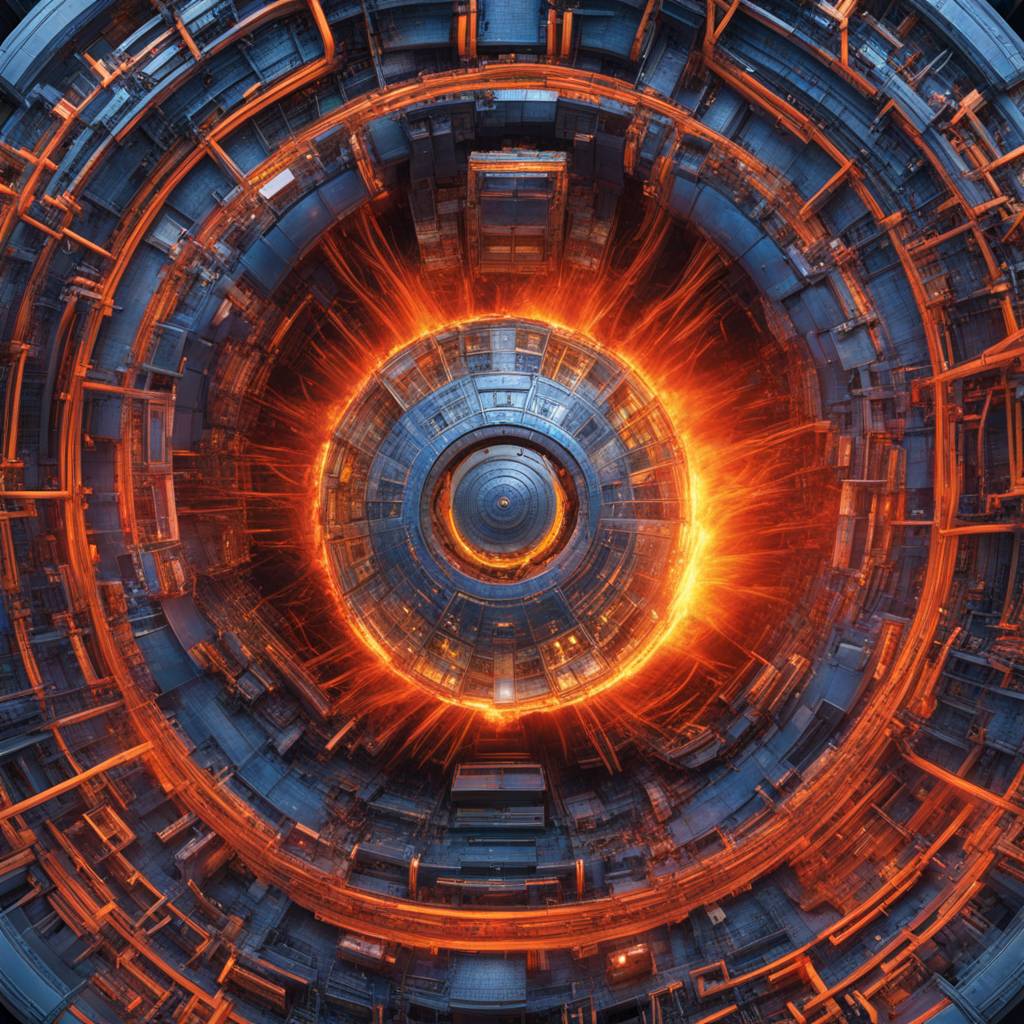Researchers at the U.S. Department of Energy’s Princeton Plasma Physics Laboratory (PPPL) have been working on the challenge of bringing energy from fusion to the power grid. Building upon recent findings that showed promise in coating the inner surface of a fusion plasma vessel with liquid lithium, the team has determined the maximum density of neutral particles at the edge of a plasma before it cools off and potentially becomes unstable. This knowledge is crucial for fueling the fusion reaction effectively. The research, featured in a paper in Nuclear Fusion, included observations, simulations, and analysis from experiments conducted inside a fusion plasma vessel known as the Lithium Tokamak Experiment-Beta (LTX-β).
LTX-β is unique among fusion vessels around the world as its inner walls can be coated with lithium. This coating fundamentally changes the wall behavior, making the plasma more stable and allowing for a larger volume of plasma. The research team aims to show that a lithium wall can enable a smaller fusion reactor with higher power density, leading to a more cost-effective fusion power source. The team’s latest findings show the relationship between the fuel for the plasma and its stability, highlighting the maximum density of neutral particles at the plasma edge. By keeping the density below a certain level, researchers believe they can reduce the likelihood of instabilities and guide best practices for fueling their plasmas.
In LTX-β, fusion is fueled using puffs of hydrogen gas from the edge and a beam of neutral particles. Researchers are working to refine these methods to create an optimal plasma that can sustain fusion for extended periods and generate enough energy for practical use on the power grid. The team is focused on retaining an even temperature across the plasma to manage instabilities that could hinder the fusion reaction. By determining the maximum density of neutral particles that allows for a flat-edge temperature profile, researchers can prevent temperature drops and destabilizing instabilities that could disrupt the fusion reaction.
A key aspect in managing the fusion plasma is achieving a balance between the temperature at the core and the edge. Physicists use temperature profiles to assess this balance, aiming for a flat profile to maintain stability. Researchers found that exceeding the maximum density of neutral particles at the edge can lead to a peaked temperature profile and instabilities such as tearing modes. These instabilities could threaten the plasma and halt the fusion reaction if left uncontrolled. The team is exploring methods to manage the fusion plasma effectively to ensure a stable reaction that can support the power grid.
The project at PPPL involves a team of researchers, including Richard Majeski, Santanu Banerjee, Dennis Boyle, Anurag Maan, Nate Ferraro, George Wilkie, Mario Podesta, and Ron Bell. Their continued work on the project includes optimizing the direction in which the neutral beam, used to heat the plasma, is injected into the tokamak. By creating a new port for the beam and testing various trajectories, the team aims to ensure the beam does not interfere with other parts of the equipment. The U.S. Department of Energy has funded this research to advance the development of fusion energy technology and explore the potential of using liquid lithium in fusion reactors to achieve a stable and cost-effective power source for the future.






